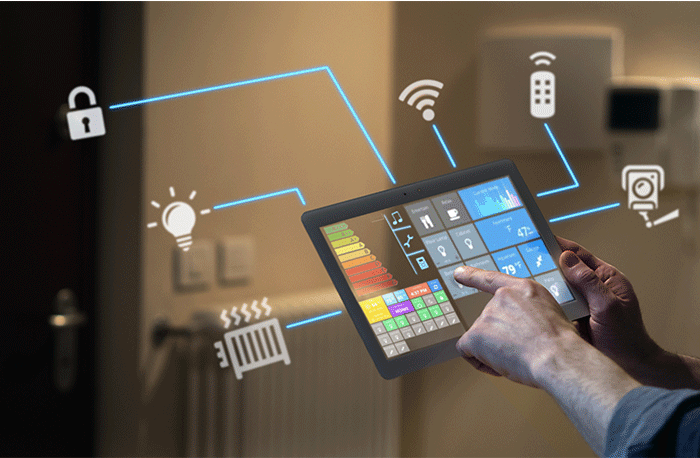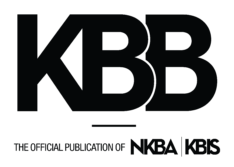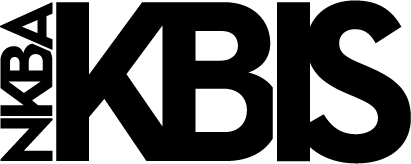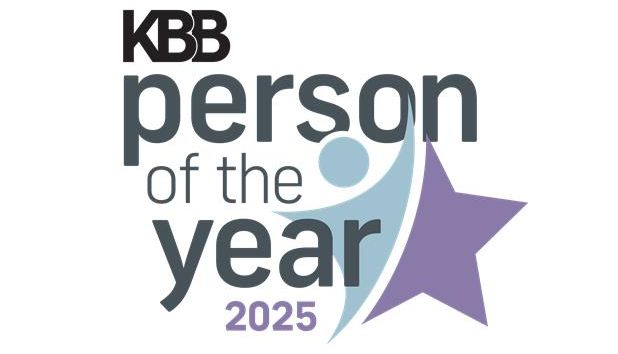As of last year, 35 billion IoT devices have been installed worldwide, and according to statista.com, nearly 40% of all households are currently utilizing IoT-enabled technology. That number is expected to more than double by 2030. Did you know that the average number of connected devices per household is 50? 50!
Change can be frightening, and people – by nature – are afraid of things they don‘t understand, like smart technology myths. Education is the key to comprehending how technology can help enhance their experience. For instance, energy efficiency is improved by HVAC controls, such as Google Nest, which senses when someone is home and adjusts the temperature accordingly.
Deflating Bygone Smart Technology Myths
Initially, residential tech-enabled features were for the wealthy. While many features are luxurious, most tech-enabled devices are now affordable and may help enable a homeowner to remain in their home long term, even with disabilities. Voice-activated devices can control a kitchen faucet or an entire lighting system. There are interactive devices to toss your dog a treat when you’re not home, replete with a screen so they see and hear you.
While technology can be fun and make life a lot easier, homeowners can find it overwhelming to adapt. Many don’t realize the interface on their phone or wall often becomes what they’re accustomed to seeing as it morphs into a thermostat, alarm keypad or dimmer control. While each manufacturer’s device looks different, the common goal is to make life less confusing, not add to it. Sometimes it takes a walk through a showroom to demonstrate that the technology doesn’t have to be complicated to use.
Great design seamlessly incorporates solutions for the “what-if” scenarios. I witness an emotion from those unfamiliar with smart home technology: fear of obsolescence – spending loads of cash for something that may become dysfunctional in a half-decade. And for good reason. The Cat 5 cable we used in 2010 can’t carry the signal we may need these days. Enter the very old-school: conduit. It’s cheap, easy to install and never goes bad. Run it anywhere your client wants to operate something now or in 50 years. Let the client know you understand that technology continually evolves and that you intend to future-proof their plan.
Addressing Project Apprehension
As designers, we do not need to know much about technology to incorporate it into our plans. For every smart home on the market, there‘s an integration company staffed with amazing people who love technology and understand how to communicate its needs to homeowners. Note: An integration company could be your BFF when easing clients toward a tech-enabled smart home and addressing their anxiety over smart technology myths.
As a lighting expert, incorporating a comprehensive lighting plan is a must for my clientele. For instance, the need for color temperature variability as the day progresses helps the body adjust, keeping it awake during prime work hours and preparing a melatonin release as bedtime approaches. Do we designers need to understand the technology that makes this happen? Of course not. But if we have established relationships with electronics integrators who can effortlessly explain technology’s advantages, we not only are a step ahead of the competition, but we are bettering our client’s life and safety. And it makes creating the lighting plan less time consuming since we don’t have to establish where every switch must be placed.
Anyone who works with an integrator knows the first thing to disappear is wall and ceiling acne. Technology enables us to provide cleaner lines and fewer visual distractions, better showing our design’s intent. Multi-gang light switches vanish, as do thermostats, alarm controls and speakers, replaced by tablets, phones and single-gang multi-use keypads.
A note on how to charge: Every firm has its preferred business model. Many do not take a direct monetary profit when engaging an electronics integrator. They pass the responsibility (and liability) to that entity, freeing themselves to focus on their proficiencies. Their benefit comes from supplying trust, integrity and expertise to the project.
Fear not! As designers, we have resources available to help us address client concerns with technology. First stop: your local integrator. If you can’t find one through referrals, there’s always CEDIA, the trade group that is to technology what NKBA is to us.
Adam Gibson, CMKBD, CLIPP, CAPS, is an architectural designer, consultantof and owner of Adam Gibson Design in Carmel, Ind. AdamGibson.com
Photo credit: HQUALITY/Adobe Stock









